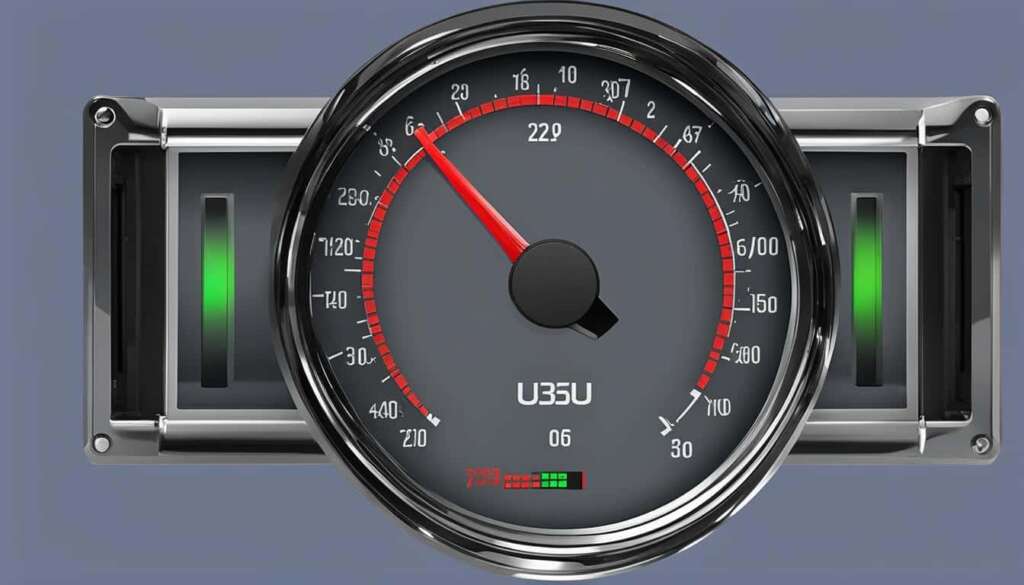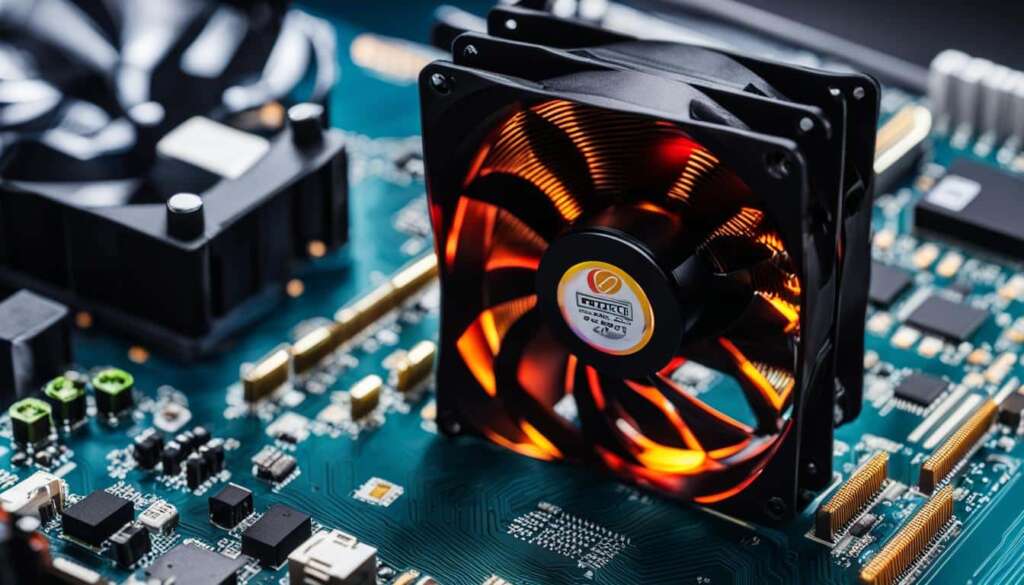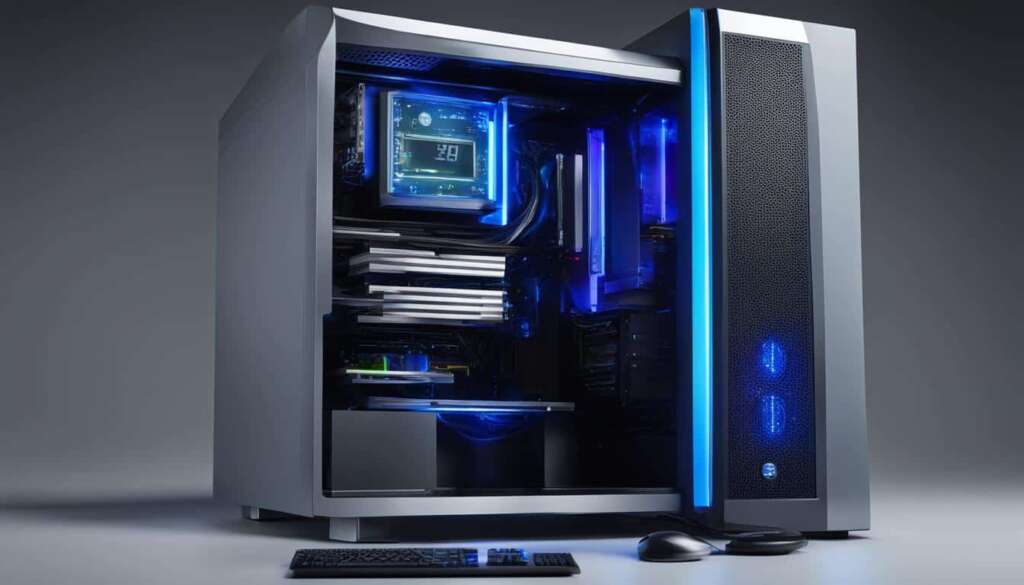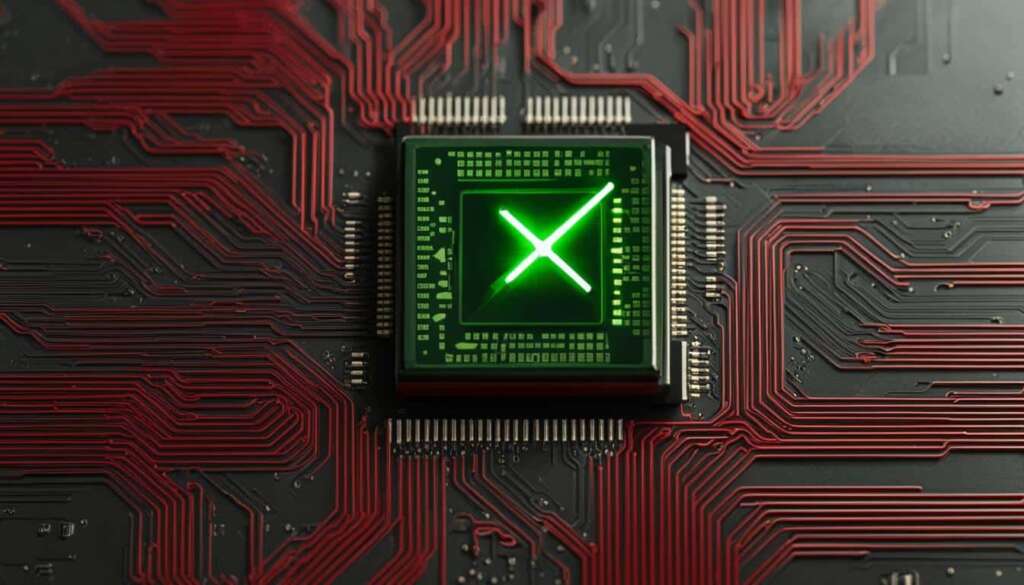Table of Contents
High CPU temperatures can lead to overheating issues and can cause problems for your PC. Monitoring your CPU temperature is crucial for maintaining optimal PC performance and preventing damage. To keep your CPU temp in check, you can use temperature monitoring tools like Core Temp, NZXT’s CAM, HWInfo, Open Hardware Monitor, SpeedFan, and AMD System Monitoring. These tools allow you to monitor CPU temps in real time and ensure that your PC is running within safe temperature ranges.
Key Takeaways:
- Monitoring your CPU temperature is essential for PC health and performance.
- High CPU temps can cause overheating issues and potential damage.
- Temperature monitoring tools like Core Temp and NZXT’s CAM can help monitor CPU temps in real time.
- Regularly checking CPU temperature ensures that your PC is running within safe temperature ranges.
- Seeking appropriate measures to address high CPU temps can help prevent system crashes and freezes.
How to Check Your CPU Temperature
To ensure optimal performance and prevent overheating issues, it’s important to regularly check your CPU temperature. By monitoring the temperature, you can take necessary measures to keep your CPU running within safe limits. In this section, we will explore two methods: using a CPU heat monitoring tool and checking the temperature through the built-in BIOS/UEFI tool in Windows.
Using a CPU Heat Monitoring Tool
One popular CPU heat monitoring tool is Core Temp, which allows you to monitor the temperature of each CPU core in real-time. To check your CPU temperature using Core Temp, follow these steps:
- Download and install Core Temp from the official website.
- Open the Core Temp application.
- Monitor the temperatures displayed for each CPU core.
Core Temp provides detailed information about temperature readings, including the minimum, maximum, and average temperatures. It also offers additional features such as a system tray indicator and customizable alarms for high temperatures.
Image:
Checking CPU Temperature through the Built-in BIOS/UEFI Tool
Another method to check your CPU temperature is by accessing the BIOS/UEFI during startup. The BIOS/UEFI provides basic hardware information, including the CPU temperature. Here’s how you can check your CPU temperature using the built-in BIOS/UEFI tool:
- Restart your computer.
- During startup, access the BIOS/UEFI by pressing the designated key (usually Del or F2) as prompted on the screen.
- Navigate to the Hardware Monitor or PC Health Status section.
- Look for the CPU temperature displayed on the main screen.
It’s important to note that the CPU temperature displayed in the BIOS/UEFI is typically the idle temperature and may not reflect the temperature during system use.
Using both a dedicated CPU heat monitoring tool like Core Temp and checking the CPU temperature through the built-in BIOS/UEFI tool can provide a comprehensive understanding of your CPU’s thermal behavior.
Why is My CPU Temp So High?
There are several factors that can contribute to high CPU temperatures. It’s important to understand the causes of high CPU temps to address the issue effectively and prevent potential damage to your computer.
- Intensive Simultaneous Operations: Running a lot of high-intensity tasks simultaneously can put a heavy load on your CPU, causing it to generate more heat. This can lead to increased CPU temperatures.
- Overclocking: Overclocking is a process of increasing the clock speed of your CPU beyond its default settings. While this can improve performance, it also produces more heat, leading to high CPU temps. It’s important to ensure proper cooling when overclocking.
- Faulty PC Fan: A faulty or malfunctioning PC fan can fail to dissipate heat effectively, resulting in higher CPU temperatures. Regularly checking and maintaining your PC fan can help avoid this issue.
- Dust Buildup: Dust buildup inside the computer chassis can block airflow and prevent proper cooling. This can cause the CPU temperature to rise. Regularly cleaning your computer and removing dust can help maintain optimal CPU temperatures.
- Limited Ventilation Space: If your computer has limited ventilation space or is placed in an enclosed area, it can lead to poor airflow and heat buildup. Ensuring adequate ventilation and keeping your computer in a well-ventilated area can help mitigate high CPU temperatures.
- System Freezes and Crashes: If your system frequently freezes or crashes, it may indicate a problem with heat management. Overheating can cause instability in your system, leading to freezes and crashes. Resolving cooling issues can help prevent these symptoms.
To diagnose and address high CPU temperatures, it’s essential to monitor your CPU temperature regularly. By identifying the underlying cause and taking appropriate measures, you can prevent overheating and ensure optimal performance of your PC.
What CPU Temperature is Normal?
The normal CPU temperature can vary depending on the type of CPU and the workload it is handling. It’s important to understand the safe heat range to ensure your CPU operates efficiently and avoid potential issues such as overheating and performance degradation.
For a normal workload, a safe temperature range for most CPUs is typically between 40–65°C (104–149°F). This range allows the CPU to function optimally without experiencing any significant performance impact or potential damage. However, it’s essential to note that more intensive tasks, such as gaming or video editing, can elevate the CPU temperature.
During more demanding activities, it is not uncommon for CPU temperatures to reach higher levels. In such cases, temperature ranges of 70–80°C (158–176°F) are generally considered acceptable. However, it is important to monitor the CPU closely to ensure it does not consistently exceed these temperatures, as prolonged exposure to high temperatures can lead to long-term damage.
A bad CPU temperature is typically considered to be 80-85°C (176–185°F) or above, indicating a potential issue with cooling or other hardware-related problems. Sustained high temperatures can result in system instability, performance throttling, crashes, or even permanent damage to the CPU. If you consistently observe temperatures in this range, it is crucial to investigate and address the underlying issues promptly.
While gaming, it’s important to maintain an ideal CPU temperature for optimal performance. The ideal CPU temperature when not gaming is around 45-60°C (113–140°F). This range strikes a balance between performance and cooling, ensuring that the CPU operates at its best without exceeding safe temperature limits.
To provide a visual representation, here is a breakdown of the different CPU temperature ranges:
| Temperature Range | Description |
|---|---|
| 40–65°C (104–149°F) | Normal temperature range for a normal workload |
| 70–80°C (158–176°F) | Acceptable range during more intensive tasks |
| 80-85°C (176–185°F) or above | Indicates a potential issue |
| 45-60°C (113–140°F) | Ideal temperature range when not gaming |
Closely monitoring and maintaining CPU temperatures within these ranges will help ensure the longevity and performance of your computer system.
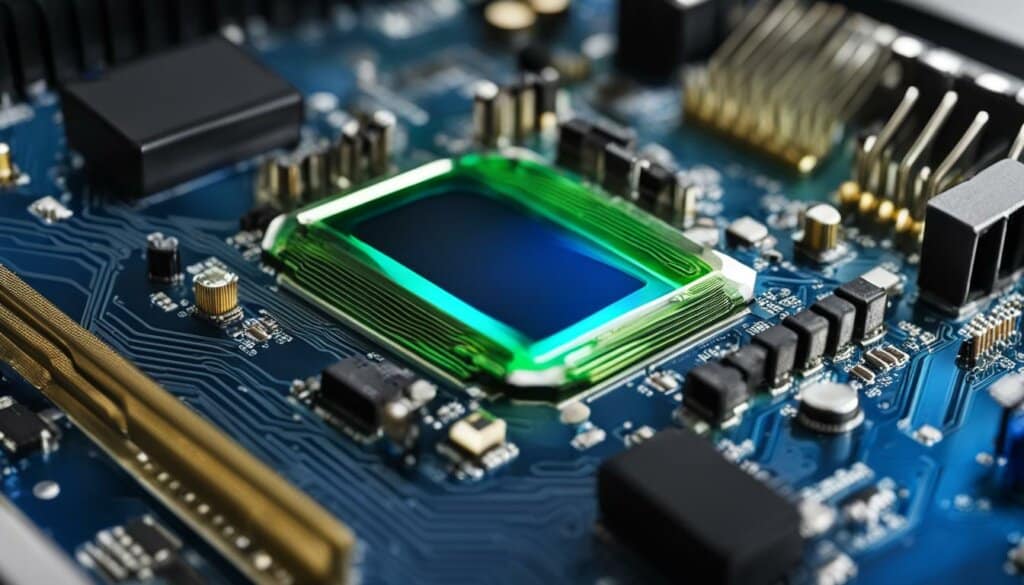
How to Check PC Temperature in the BIOS/UEFI
To ensure your PC is running within safe temperature limits, it is important to check your CPU temperature regularly. One way to do this is by accessing the BIOS/UEFI software on your computer. Follow the steps below to check your CPU temperature using the BIOS/UEFI:
- Restart your computer and wait for the system to boot up.
- During the boot-up process, press the specified key to enter the BIOS/UEFI. This key is usually displayed on the screen during startup and may vary depending on your computer manufacturer.
- Once inside the BIOS/UEFI, navigate to the Hardware Monitor or PC Health Status section. The exact name and location may differ based on your computer’s motherboard and BIOS/UEFI version.
- Look for the CPU temperature reading displayed in the BIOS/UEFI. This value represents the temperature at which your CPU is running at idle, meaning it does not reflect the temperature during system use.
However, it’s important to note that checking the CPU temperature in the BIOS/UEFI only provides a snapshot of the temperature at idle. To gain a more comprehensive and real-time view of your CPU temperature during system use, it is recommended to use dedicated monitoring software such as Core Temp, NZXT’s CAM, or HWInfo.
“Checking the CPU temperature in the BIOS/UEFI gives you an idea of the idle temperature, but it’s crucial to monitor the temperature during actual system usage for a more accurate assessment of CPU performance and cooling requirements.” – [Expert Name], [Expert Title]
https://www.youtube.com/watch?v=MM6c01iNskk
Conclusion
In conclusion, effective CPU temperature management is essential for maintaining optimal PC health and ensuring optimal performance. By regularly monitoring your CPU temperature and taking necessary steps to address high temperatures, you can prevent overheating issues and potential damage to your computer.
Utilizing temperature monitoring tools such as Core Temp, NZXT’s CAM, HWInfo, Open Hardware Monitor, SpeedFan, and AMD System Monitoring can help you keep track of your CPU temperature in real time and ensure that it stays within safe ranges.
Remember that high CPU temperatures can be caused by factors such as running intensive tasks simultaneously, overclocking, faulty PC fans, dust buildup, limited ventilation space, and system freezes. By addressing these issues and implementing proper cooling solutions, you can effectively manage your CPU temperature and extend the lifespan of your PC.
To ensure your PC operates at its best, make it a habit to regularly check and monitor your CPU temperature. By doing so, you can identify any potential issues early on and take appropriate measures to maintain the optimal performance of your computer.
FAQ
Why is it important to monitor CPU temperature?
High CPU temperatures can lead to overheating issues and can cause problems for your PC. Monitoring your CPU temperature is crucial for maintaining optimal PC performance and preventing damage.
How can I check my CPU temperature?
You can use a CPU heat monitoring tool like Core Temp. Simply download and install the tool, open the application, and monitor the temperatures for each CPU core. You can also check your CPU temperature using Windows’ built-in BIOS/UEFI tool.
What factors can contribute to high CPU temperatures?
Several factors can contribute to high CPU temperatures, including running a lot of high-intensity tasks simultaneously, overclocking the CPU, having a faulty PC fan, dust buildup inside the computer chassis, limited ventilation space, and system freezes and crashes.
What is considered a normal CPU temperature?
The normal CPU temperature depends on the type of CPU and the workload. Generally, a safe heat range for a normal workload is between 40–65°C (104–149°F), while more intensive tasks can increase the temp to 70–80°C (158–176°F). A bad CPU temp is considered to be 80-85°C (176–185°F) or above, indicating a potential issue. The ideal CPU temp when not gaming is around 45-60°C (113–140°F).
How can I check my CPU temperature in the BIOS/UEFI?
You can check your CPU temperature in the BIOS/UEFI by restarting your computer and accessing the BIOS/UEFI software. Look for the CPU temperature displayed in the Hardware Monitor or PC Health Status section.
Why is it important to monitor and manage CPU temperature?
Monitoring and managing CPU temperature is crucial for maintaining optimal PC performance and preventing overheating issues. By using temperature monitoring tools and taking necessary steps to address high CPU temperatures, you can ensure that your PC remains in good health.



